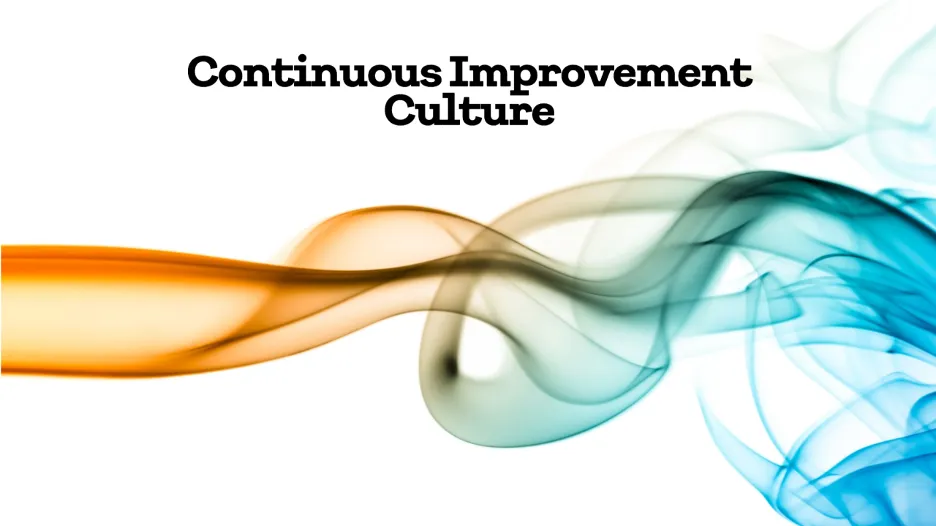
Continuous Improvement as an Enabler of Sales Growth (Part 3 of Our Series)
September 5, 2024
Continuous improvement isn't just about optimizing internal processes or reducing costs—it can also be a powerful driver of sales growth. By systematically enhancing customer experience, streamlining sales processes, and aligning products or services more closely with market demands, organizations can create new opportunities for growth and revenue expansion. Here’s how continuous improvement enables sales growth:
1. Enhancing Customer Experience to Drive Sales
Understanding Customer Needs: Continuous improvement fosters a customer-centric approach, where organizations gather feedback and analyze customer data to better understand needs. This enables companies to adapt offerings to meet customer preferences effectively, leading to more targeted marketing strategies and enhanced product development—both of which directly contribute to sales growth. For example, companies that regularly use customer feedback loops often achieve significant increases in customer satisfaction and retention, driving more sales over time.
Improving Customer Satisfaction and Retention: A study by Bain & Company found that a 5% increase in customer retention can lead to a 25% to 95% increase in profits. Continuous improvement initiatives help organizations enhance the customer experience by reducing friction points in the buying process, improving service quality, and ensuring consistent value delivery. Happy customers are more likely to make repeat purchases, refer new customers, and become brand advocates, all of which contribute to sales growth.
Leveraging Net Promoter Scores (NPS): Companies that focus on improving customer experience through continuous feedback loops often see increases in their NPS. A higher NPS is strongly correlated with higher customer loyalty and increased sales. For instance, firms that boost their NPS by 10 points can see revenue growth rates that are double those of competitors with lower scores.
2. Streamlining Sales Processes for Greater Efficiency
Reducing Sales Cycle Time: Continuous improvement in the sales process focuses on eliminating bottlenecks that slow down the sales cycle. This could involve automating tasks, refining lead qualification, or optimizing communication between sales and marketing teams. By reducing the time it takes to convert a prospect to a customer, companies can increase sales volume and speed up revenue generation.
Optimizing Sales Workflows: Implementing methodologies like Lean or Six Sigma helps refine sales workflows, reduce inefficiencies, and increase the effectiveness of sales teams. By analyzing sales data to identify barriers, such as lengthy approval processes or inconsistent pricing strategies, companies can streamline operations, reduce costs, and achieve higher close rates.
Improving Sales Team Performance: Continuous improvement emphasizes ongoing training and development for sales teams, equipping them with the latest tools, techniques, and knowledge to engage customers effectively. This results in better performance, higher productivity, and increased sales.
3. Aligning Product and Service Offerings with Market Demands
Adapting to Market Changes Quickly: Continuous improvement enables organizations to stay agile and responsive to changing market conditions. By constantly gathering market intelligence and customer feedback, companies can adjust product or service offerings to align with evolving customer needs. This proactive approach helps maintain a competitive edge and capture new sales opportunities.
Innovating Based on Customer Insights: Continuous improvement drives innovation by encouraging experimentation and rapid iteration. By using feedback and data analysis to identify market gaps or unmet needs, companies can develop new products or services that drive sales. For example, Apple's continuous innovation, driven by customer feedback, has consistently led to strong sales growth.
Enhancing Product Quality: Continuous improvement focuses on refining product quality, reducing defects, and ensuring consistent performance. High-quality products increase customer satisfaction and trust, leading to repeat purchases and positive word-of-mouth, ultimately driving sales growth.
4. Leveraging Data and Analytics for Strategic Sales Decisions
Data-Driven Sales Strategies: Continuous improvement leverages data analytics to understand customer behavior, market trends, and sales performance. This allows for more accurate forecasting, better targeting of potential customers, and the creation of personalized campaigns, all of which can boost sales.
Identifying High-Value Opportunities: Data analytics helps sales teams focus on opportunities with the greatest likelihood of conversion. Continuous improvement enables systematic evaluation of sales leads and identification of patterns that lead to successful sales, prioritizing efforts on the most promising prospects.
5. Fostering a Culture of Accountability and Ownership in Sales Teams
Empowering Sales Teams: Continuous improvement fosters a culture where sales teams take ownership of their processes and outcomes. This leads to greater accountability and motivation to achieve sales targets. Empowered teams are more likely to experiment with new approaches and continuously seek performance enhancements, driving better sales outcomes.
Encouraging Collaborative Sales Practices: Continuous improvement encourages cross-functional collaboration among sales, marketing, product development, and customer service teams to optimize the customer journey. This alignment ensures that sales strategies are fully supported and integrated with organizational goals, leading to more effective campaigns and stronger sales growth.
6. Case Studies and Data to Support Continuous Improvement in Sales Growth
Salesforce: Salesforce attributes its rapid growth to continuous improvement practices, such as regularly gathering customer feedback, refining product offerings, and optimizing sales processes. This approach enabled Salesforce to achieve a 26% annual growth rate and maintain high customer retention.
Amazon: Amazon uses continuous improvement to streamline its sales processes and enhance customer experience. By constantly refining its website, checkout process, and recommendation algorithms based on customer behavior and feedback, Amazon maintained high conversion rates and strong sales growth, reporting a 38% increase in net sales in 2020.
Higher Sales Growth with Continuous Improvement: Research by McKinsey & Company shows that companies with a strong culture of continuous improvement are 1.5 times more likely to achieve higher sales growth rates than their competitors, driven by agility, customer focus, and process optimization.
Higher Win Rates for Sales Teams: A study by the Sales Management Association found that sales teams using continuous improvement methods have 15% higher win rates compared to those that do not. This increase is attributed to better alignment between sales strategies and customer needs, as well as improved sales processes and team performance.
7. Creating a Feedback Loop Between Sales and Product Development
Closing the Feedback Loop: By fostering a continuous feedback loop between sales and product development, companies can align their offerings with market demands. Sales teams gather insights directly from customers, which can refine existing products or help create new ones that better meet needs.
Adobe: Adobe’s transition to a subscription-based model was driven by continuous feedback from its sales team and customers, leading to a significant increase in customer acquisition and retention, and fueling sales growth through recurring revenue streams.
8. Reducing Customer Churn to Maintain Steady Sales Growth
Proactive Customer Retention Strategies: Continuous improvement identifies the root causes of customer churn and implements strategies to address them. By proactively tackling issues like slow response times or product quality concerns, organizations can reduce churn rates and maintain steady sales growth.
Impact of Reducing Churn: According to Harvard Business School, increasing customer retention rates by just 5% can boost profits by 25% to 95%. Continuous improvement initiatives focused on customer satisfaction and retention can significantly impact sales growth by fostering a loyal customer base and generating repeat sales.
Conclusion
Continuous improvement is a powerful enabler of sales growth. By enhancing customer experience, streamlining sales processes, aligning offerings with market needs, leveraging data-driven insights, and fostering a culture of accountability, organizations can drive substantial revenue growth. In today’s competitive landscape, continuous improvement isn't just a tool for operational efficiency—it's a strategic approach to achieving sustained sales success.
Stay tuned for future articles in our series, where we will explore practical tips on implementing continuous improvement in your organization to maximize business growth!
